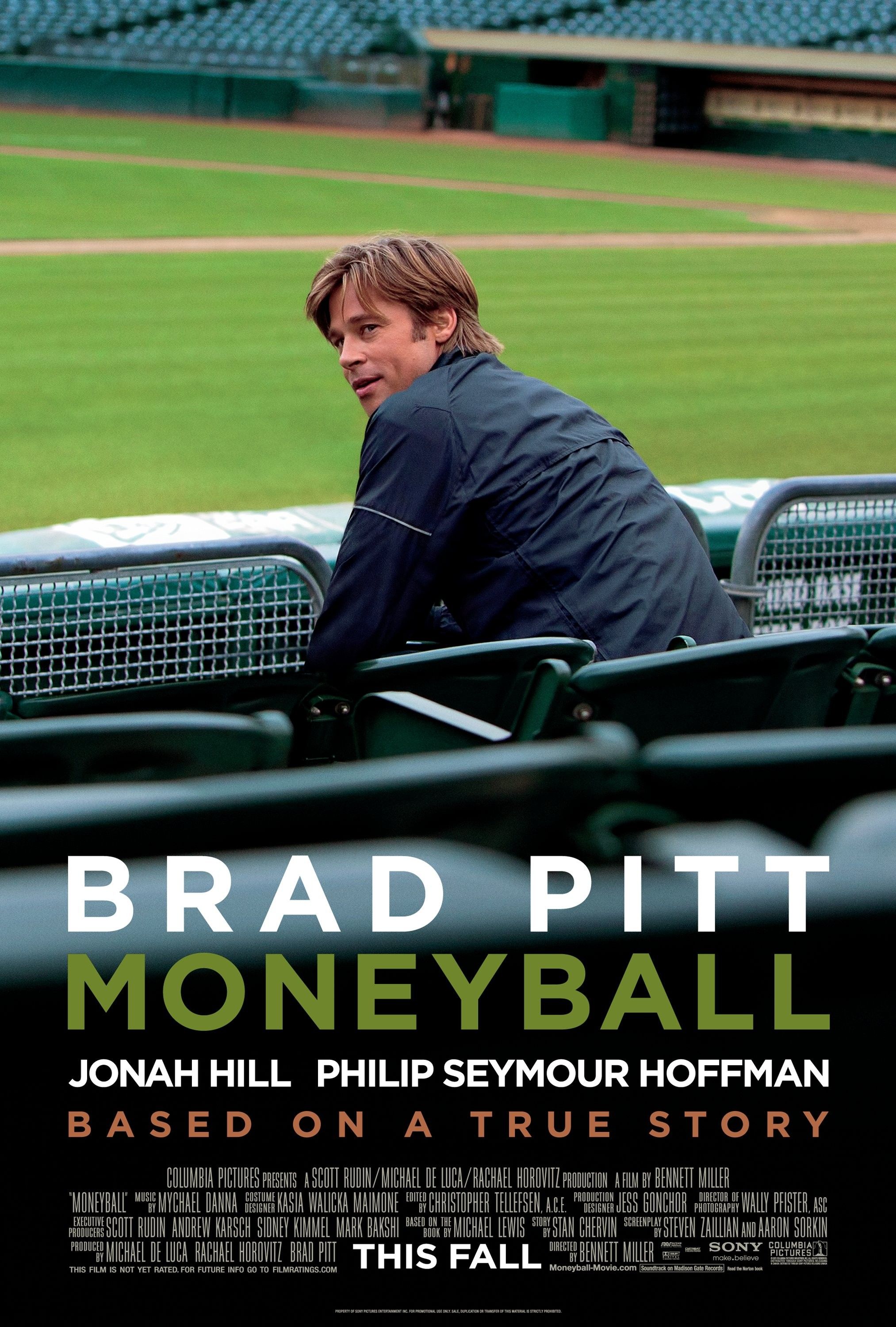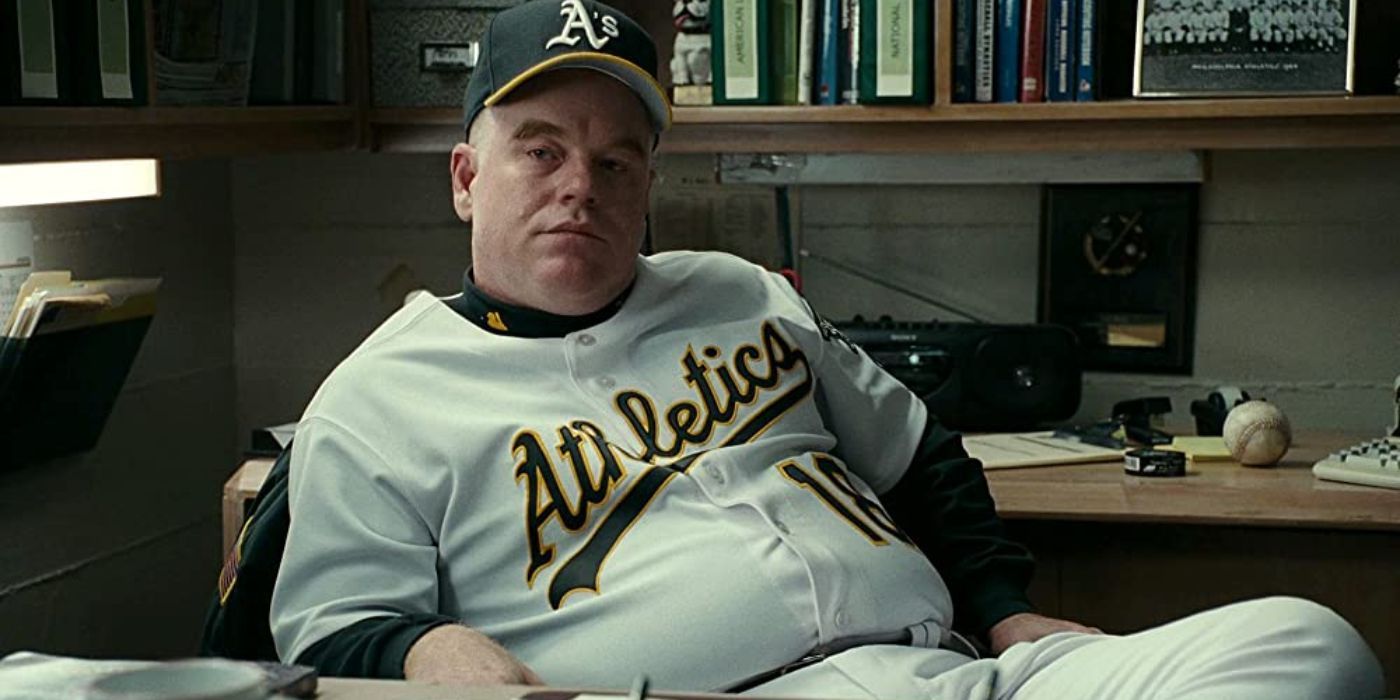Moneyball
Summary
TheMoneyballtrue history compares well in many way to the movie but also has some rank inconsistencies . It portrays many of the challenges the 2002 Oakland Athletics face up as they sought to contend with big grocery team with much higher budget . One of the most significant difficulties that the A ’s face is continue gifted players , who are often lured aside by teams like the New York Yankees , who had a budget of $ 115 million , almost triple that of the A ’s $ 40 million . This disparity in resourcefulness is frustrating for the A ’s leaders , and it prompts General Manager ( GM ) Billy Beane to take a new approach to team management .
Billy Beane ’s approach was based on sabermetrics , an analytical approach to baseball first championed by Bill James in the 1980s . Beane ’s decision to embrace sabermetrics make some stress within the A ’s organization , but it ultimately prove successful . However , the movieMoneyballalso took some significant liberty with the dependable report of the 2002 Oakland Athletics . For good example , the film hyperbolize the battle because of Beane ’s newfangled overture to squad management , making it seem like he is constantly battling against his own coaches and scouts . In realness , most of the A ’s staff tolerate Beane ’s newfangled approach .
Screen Rant breaks down the best pic of all fourth dimension , from sure-enough classic to modern masterpieces across multiple genres of movie theater .

Art Howe & Billy Beane’s Disagreements Were More Professional In Real Life
The portraiture of Art Howe based on theMoneyballtrue story remain a subject of disceptation and criticism . The film depicts Howe as a refractory and dysphoric character who resists Billy Beane ’s new approach to squad direction . In the moving picture , Howe appear to want theMoneyballtheory to fail at all costs , and Beane is force to switch players to make Howe use the hitters and infielders that the analytics dictate . However , this is purely fictional .
In reality , Howe and Beane had disagreements , but their conversations were always conduct professionally . Howe was implicated that Beane was neglecting the game ’s human constituent , but in the end , they work together to make the As the practiced they could be . Julia Ward Howe respect Beane as a GM , and Beane respected Howe ’s expertness . Beane even in camera apologized to Howe for his sometimes over - the - top interactions during that time of year . Ultimately , Howe adjudicate to move onfrom his initial ire over his characterization inMoneyball . He recognized that the people who recognize him best knew the truth of his character .
Moneyball’s Bill James Really Was Hated (& Is Still Controversial)
Billy Beane’sMoneyballapproach is founded on the analytical ideas of Bill James , who mint the term sabermetrics in 1980 to name " the search for objective cognition about baseball . " Before the advent of sabermetrics , decisions about players were base solely on the intuition of scouts and manager , who believe they know what a good actor looked like . While intuition and experience have a place in sports , rely solely on human percept is unreliable . Scouts trust on what they thought they find conduct to as many strikeout as home run when choosing players , which was not good for the players , the game , or the occupation of baseball .
James ab initio had trouble getting his ideas release by traditional sports editors and ended up self - publishing his first few annual Bill James Baseball Abstracts . TheMoneyballseason of the Oakland As in 2002 leaven that James ' ideas can indeed work when applied to variation . However , while some team bought into the idea after the A ’s extraordinary time of year , many others felt threatened . James ' hot-tempered disposition does not avail matters . As latterly as 2018 , he thurify fans , owners , and player by point out that MLB players are all replaceable . However , his approach of call for hard datum rather than relying on fuzzy perceptual experience is wakeless .
WHERE TO WATCH : Stream Moneyball on Amazon Prime Video

Moneyball’s Peter Brand Is Fictional (But Based On A Real Person)
The character ofPeter Brand inMoneyball , played by Jonah Hill , is a largely fictionalize version of Paul DePodesta . Unlike the unsure and unathletic Yale - educated Brand , DePodesta was a confident and athletic Harvard graduate who had roleplay both football and baseball in college . Brand is depicted as being poached from the Cleveland baseball game squad , now called the Guardians , by Beane in 2002 . In reality , DePodesta had been with the Oakland A ’s since 1999 . Brand is accurately depicted as applying the concepts of sabermetrics with Beane to build a team of undervalued players , but the relationship is more collaborative than shown in the cinema .
The portrayal inMoneyballwas so inaccurate that DePodesta himself enquire for the name change . Despite the inaccuracies in the film ’s portrayal of DePodesta , however , he and Beane maintain a close friendly relationship to this day . DePodesta credits Beane with giving him his start in the manufacture and has get going on to have a successful vocation in baseball operations with several squad before moving onto football . While the motion picture may have taken some originative liberties with the character of Peter Brand , the real story of how Beane and DePodesta use data and analytics to build a winning squad in the grimace of limited resource is a remarkable and rightful one .
Billy Beane Didn’t Fire Grady Fuson In Real Life
The relationship between Beane and Fuson was not at all as antagonistic as it was portrayed inMoneyball . In fact , Beane and Fuson had a professional workings kinship during their time together with the Athletics . While it ’s true that they had some discrepancy about the direction of the team , these were wield in a professional manner . There was no explosive logical argument in the hall , Fuson definitely did n’t curse at Beane , and Beane did not subsequently fire Fuson . In fact , Fuson left of his own accord and on good term in 2002 to go after opportunities with first the Texas Rangers and then the San Diego Padres .
Then , in 2010 , he returned to Oakland to once again act under Beane . This time , Fuson was brought on as a special assistant to Beane , who is presently executive vice president of baseball operations . The two men have been working together ever since . Despite their retiring dissonance , they can work together toward the common goal of build up a successful baseball game team . While the volatile prospect inMoneyballmay have added to the tension and drama , the reality is that Beane and Fuson were able to work together successfully and proceed to do so today .
The Athletics Really Did Win 20 Games In A Row
One of the most entrancing effect inMoneyballis the A ’s 20 - game winning run , and it really befall as depicted . It was the longest winning run by any American League squad at the meter and demonstrate the potency of Beane ’s information - drive approaching . The twentieth biz was play against the Kansas City Royals and the A ’s were leading 11 - 0 after the third frame . However , willing errors yield the Royals an scuttle , and they tied the game by the 9th . However , In a meet climax to the story of the As ' winner , Scott Hatteberg , a histrion that theMoneyballstrategy helped the most , strike a rest home run to batten down the victory for the A ’s .
This game was pivotal in demonstrate the voltage of analytics to inform decision - fashioning in baseball and other mutation . The As’Moneyballsuccess transmute how teams evaluate players and make decision about strategy , role player development , and enlisting . However , it is also important to note that this kind of biz also highlights the limits of analytics and showcases the grandness of human factor that can not be quantified . After all , there is always an factor of unpredictability and emotion that can influence the outcome of a game . This is why baseball game and mutation , in general , cover to captivate and engage people .
The Movie Leaves Out Some Key Players
One thing that theMoneyballtrue account was about was winning without ask a team full of major stars . This imply that , in the movie , the team was fill with mostly role players and only a few name players . However , this is not how the Oakland A ’s come through in 2002 . Yes , there was sabermetrics used to build the team , but there were also some ace players on the team that the movie choose not to mention . Whether this was because the players did n’t want their names inthe baseball movieor because it looked better forMoneyballif there were no stars , this was an interesting omission .
The biggest names here , and one of the heavy reasons the A ’s were so successful , was their lurch gyration . The top three in the gyration include Tim Hudson , Barry Zito , and Mark Mulder . These three mound unite for 57 wins and 493 strikeouts , and both Hudson and Zito had an ERA below 3.00 . Zito even gain the Cy Young Award that time of year . Add in some name like Eric Chavez and Miguel Tejada , who combined for 68 home runs , and there was plenty of talent in theMoneyballtrue story , although their inclusion in the movie might have lessened the message it wanted to distinguish .








